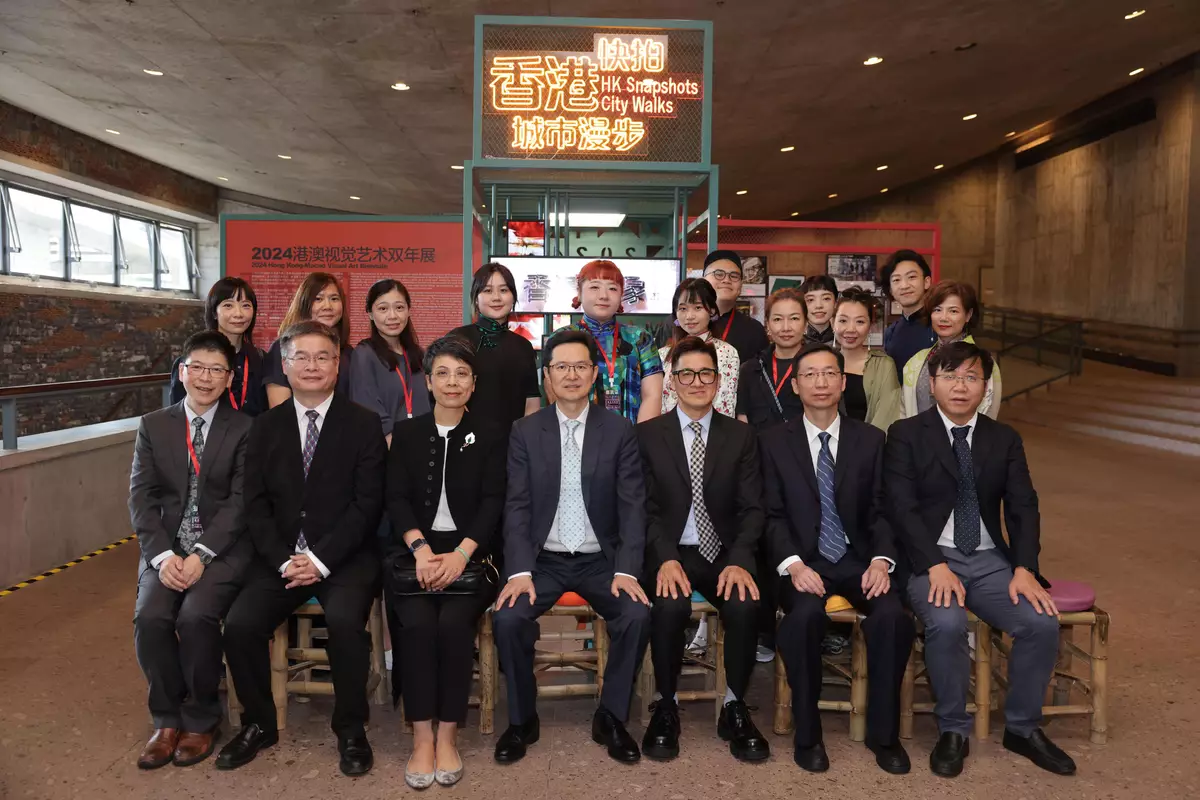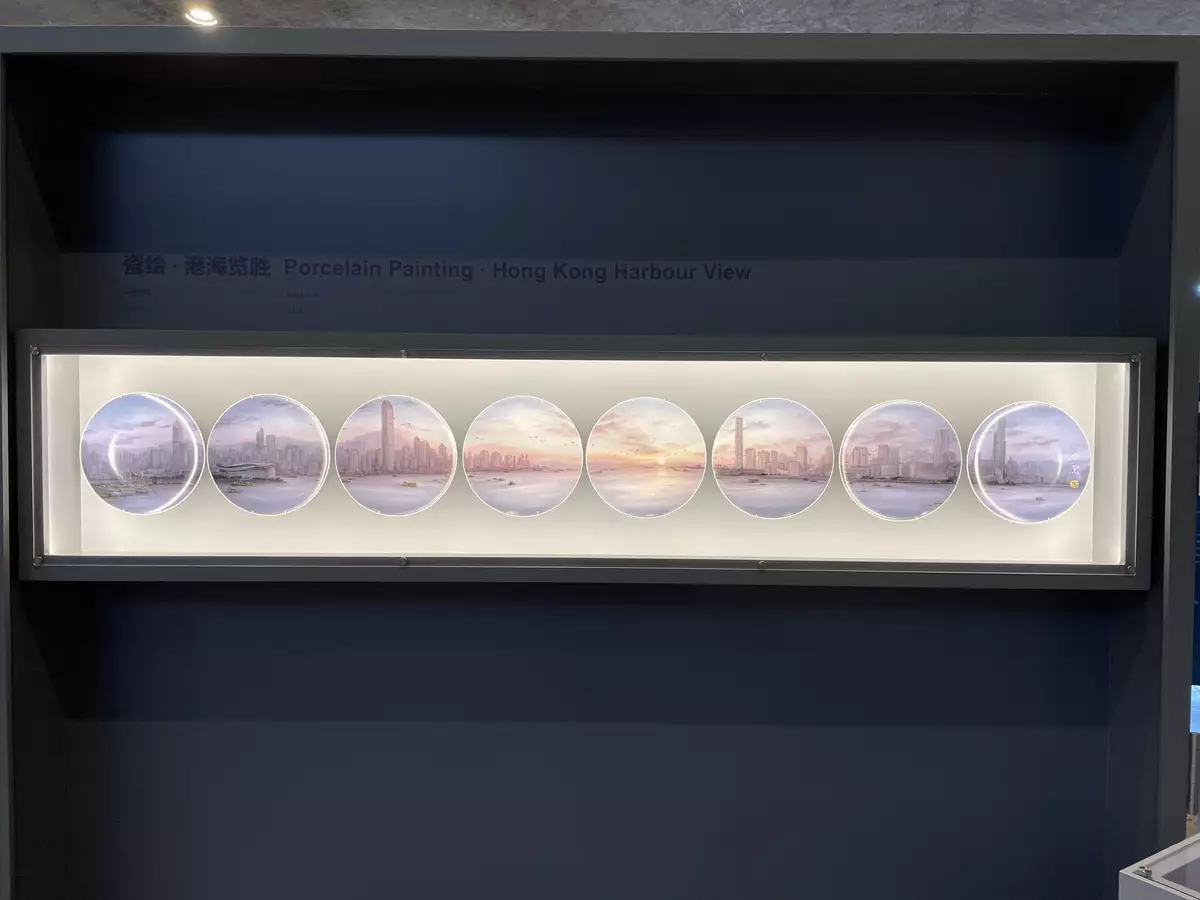Speech by SCST at Hong Kong Performing Arts Expo Gala Dinner
Following is the speech by the Secretary for Culture, Sports and Tourism, Mr Kevin Yeung, at the Hong Kong Performing Arts Expo Gala Dinner today (October 18):
Kenneth (Chairman of Hong Kong Arts Development Council, Mr Kenneth Fok), Wilfred (Chairman of Hong Kong Arts Development Fund Advisory Committee, Dr Wilfred Wong), distinguished guests, ladies and gentlemen,
Good evening.
It is with great pleasure that we gather here this evening to celebrate the immense success and conclusion of the inaugural Hong Kong Performing Arts Expo (HKPAX).
This inaugural Expo was participated by over 1 400 arts leaders and practitioners from around 60 countries and regions. There were over 100 performances, leadership talks, workshops and networking events of HKPAX, cutting across a variety of art forms. The Expo serves as a testament to the city’s commitment and efforts to cultivating artistic brilliance, fostering cultural exchange and dialogue, and delivering enthralling collaborative and cross-cultural performances for the delight of all public and visitors. It has also consolidated Hong Kong’s status as a global arts hub, further achieving our mission to develop Hong Kong into an East-meets-West centre for international cultural exchange.
I am sure that you have had a taste of our unique glamour at HKPAX. Together with the 2024 Guangdong-Hong Kong-Macao Greater Bay Area Culture and Arts Festival to be kicked off tomorrow, the two mega arts events will complement each other and enable Hong Kong to further give play to its role of “bringing in” different cultures while enabling Chinese culture to “go global”. Furthermore, I know some of you will join the tour to Shenzhen and Guangdong. You will be able see for yourself a fast developing cultural landscape with many new infrastructure and collaboration opportunities in the Mainland.
It is also our endeavour to develop our arts infrastructure to bring in more local and international arts productions. Besides the stunning West Kowloon Cultural District and other venues that you have spent time during HKPAX, I am excited to share with you the completion of many more new venues, including the Lyric Theatre Complex in West Kowloon, the East Kowloon Cultural Centre and also a new world-class stadium that can house 50 000 audience in Kai Tak Sports Park in Kowloon. We will be more than delighted to welcome you to Hong Kong again, to experience many more exciting arts and cultural events in these new venues as well as to bring in and stage your incredible productions here.
I hope in addition to experiencing our rich and vibrant cultural offerings, in the past five days you have also made new friends, reconnected with familiar faces, as well as explored exciting opportunities for future collaboration, and on this basis, you will continue to join hands in promoting arts and culture.
Before I close, I wish to extend my heartfelt thanks to everyone who has contributed to the success of HKPAX. Your dedication and passion have made HKPAX a remarkable celebration that we all cherish.
And now, I would like to say a few words in Cantonese.
(Please also refer to the Chinese portion of the speech.)
2024 Hong Kong-Macao Visual Art Biennale commences in Hangzhou with artworks blending old and new culture by Hong Kong artists
The 2024 Hong Kong-Macao Visual Art Biennale has commenced its display at the Gongwang Art Museum in Fuyang, Hangzhou today (October 18). With the theme “HK Snapshots‧City Walks”, the Hong Kong Heritage Museum curated the Hong Kong section of the biennale. Four groups of young local artists have created visual artworks inspired by Guangcai porcelain, Hong Kong cheongsams, traditional offset printing artistry and local flexible street stalls, demonstrating the city’s culture which blends the East and West and the old and new. The exhibition in Hangzhou will run until November 15 with free admission.
Addressing the opening ceremony of the biennale in Hangzhou today, the Deputy Director of Leisure and Cultural Services (Culture), Miss Eve Tam, said that the Hong Kong-Macao Visual Art Biennale is a major arts and cultural exchange event jointly organised by the Ministry of Culture and Tourism of the People’s Republic of China, the Hong Kong Special Administrative Region, the Macao Special Administrative Region and a number of Mainland cities. The Leisure and Cultural Services Department has participated in this event since its inception in 2008, presenting to Mainland audiences works created by Hong Kong artists. The National 14th Five-Year Plan has expressed clear support for Hong Kong to develop into an East-meets-West centre for international cultural exchange. The Hong Kong section of the biennale focuses on “Cultural Integration” in which budding artists from Hong Kong make use of their creativity to revitalise traditional crafts, reflecting the city’s cultural characteristics of blending the old and new and telling good stories of Hong Kong.
Four groups of artworks are on display in the Hong Kong section. The fourth-generation Lingnan School artist Rebecca Lo has inherited and applied Guangcai ink painting to ceramics to create five porcelain plate sets depicting natural and urban Hong Kong landscapes. The Hong Kong Cheongsam Association, the protection organisation of the national intangible cultural heritage item, has formed a young designer team led by Association committee membersDr Haze Ng and Eunice Lee, the team has designed and sewed four innovative sets of men’s and women’s cheongsams. Each cheongsam portrays the city’s unique architecture and memories through traditional cheongsam-making techniques and textile design. Printing studio ditto ditto, founded by sisters Donna and Nicole Chan, has utilised traditional offset printing artistry to produce four sets of printed works and postcards featuring Hong Kong attractions, scenic spots and cuisine. Lastly, exhibition designers from Key-Point Productions have drawn inspiration from flexible street stalls to create foldable installations for displaying the three groups of artworks mentioned above, offering visitors a unique “pop-up” exhibition experience.
This year’s biennale begins in Hangzhou and Nanjing, the two cultural hubs of the Yangtze River Delta region, and will later move to Guangzhou and Shenzhen in the Guangdong-Hong Kong-Macao Greater Bay Area, greatly enhancing cultural exchanges and integration between Hong Kong, Macao and the host cities.
2024 Hong Kong-Macao Visual Art Biennale commences in Hangzhou with artworks blending old and new culture by Hong Kong artists Source: HKSAR Government Press Releases
2024 Hong Kong-Macao Visual Art Biennale commences in Hangzhou with artworks blending old and new culture by Hong Kong artists Source: HKSAR Government Press Releases
2024 Hong Kong-Macao Visual Art Biennale commences in Hangzhou with artworks blending old and new culture by Hong Kong artists Source: HKSAR Government Press Releases
2024 Hong Kong-Macao Visual Art Biennale commences in Hangzhou with artworks blending old and new culture by Hong Kong artists Source: HKSAR Government Press Releases
2024 Hong Kong-Macao Visual Art Biennale commences in Hangzhou with artworks blending old and new culture by Hong Kong artists Source: HKSAR Government Press Releases





